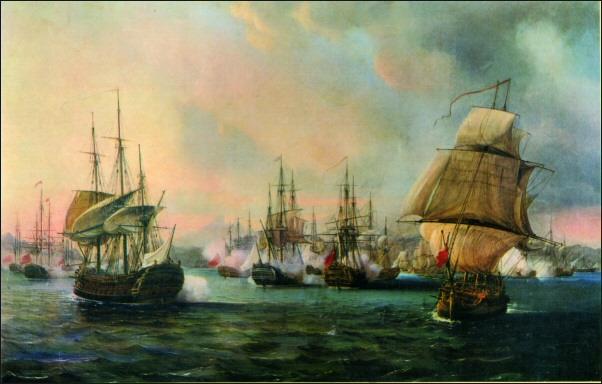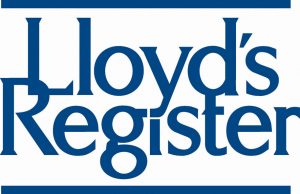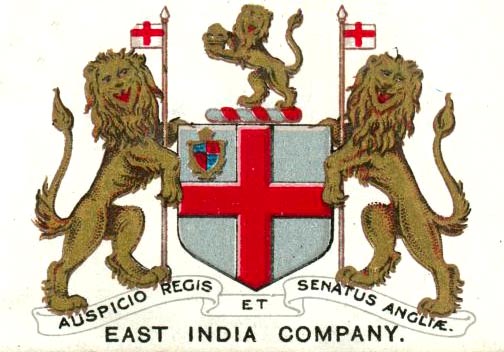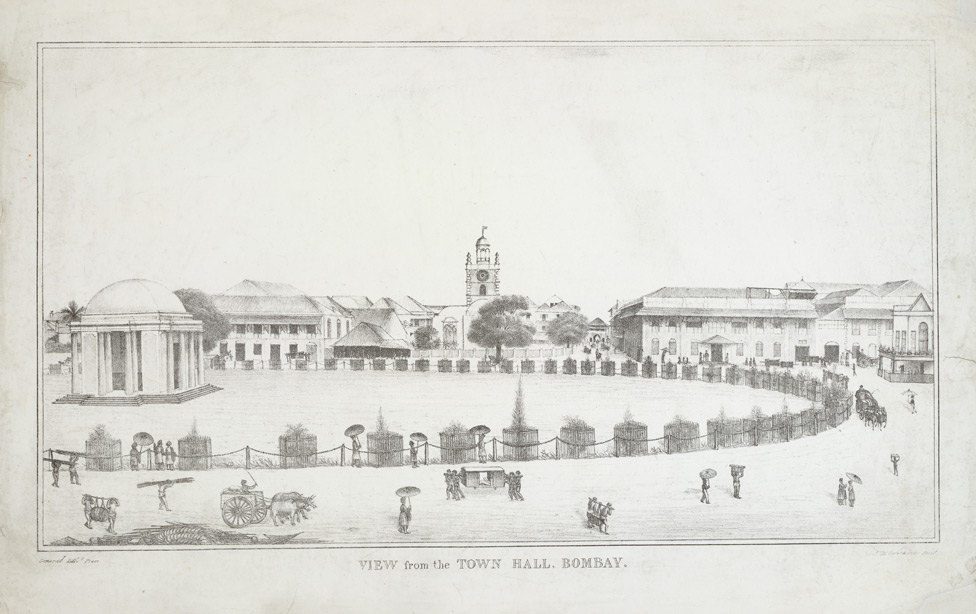Whereas the Aussies refer to the Chapman as the Convict vessel, South Africans refer to her as the Settler ship, one for confinement and the other for release.
This is fascinating history of the 70 years service to colonialism of this renowned ship and some of its crew. Apart from trading and conveyance operations, it was also fitted out with guns for two periods of its life and was engaged in naval warfare.
Main picture: A model of the Chapman
Background
After being built by Thomas Fishburn in Whitby in 1777, this two-deck 558-ton merchant ship witnessed many of the great events of a powerful empire. At the dusk of its life, the demise of sailing ships was nigh. The advent of steam would replace her elegant sails with a smoking funnel.
The original owners were a Mr J. Wilkinson and a Mr Abel Chapman but interestingly its initial name was not the Chapman but “Sybilla”. Whether Sybilla referred to his wife or daughter or to famous Sybillas of history such as Sibylla of Jerusalem (c. 1160 to 1190), queen regnant of Jerusalem or Sybilla of Normandy (1092 – July 1122), Queen consort of Scotland and wife to Alexander I, one will never know. Her initial Captain was a Thomas Walker.

The Log of the Chapman
This is the log of the Chapman as compiled by Dr J.J. Coulton. It is probably the “Shipping Register” which preceded “Lloyds” and which dates back to the 1760s.
1777-81 Construction
Built at Whitby and named “Sybilla”
Owners: J. Wilkinson, A. Chapman
Captain: Thomas Walker
However, she was renamed before completion

1781-83 Voyage#1 for British East India Company
Left London on 13th March 1781 for India
Arrived back in England on 9th March 1783
Ship’s maiden voyage
Present at the battle of Porto Praya
Captain Thomas Walker sailed the Chapman from Portsmouth on 13 March 1781, bound for Madras and Bengal, in India. The Chapman was part of a convoy of Indiamen accompanying a British squadron under Commodore George Johnstone.
The Chapman reached São Tiago on 15 April. One day later, the Chapman was present at the Battle of Porto Praya, when a French squadron under the Bailli de Suffren attacked Johnstone. Both squadrons were en route to the Cape of Good Hope, the British to take it from the Dutch, the French aiming to help defend it and French possessions in the Indian Ocean. The British convoy and its escorting squadron had anchored at Porto Praya (now Praia) in the Cape Verde Islands to take on water, when the French squadron arrived and attacked them at anchor. Due to the unexpected nature of the encounter, neither fleet was prepared to do battle. The result was an inconclusive battle in which the French warships sustained more damage than did the British. The French did capture the Indiamen Hinchinbrook (recaptured the next day), and Fortitude, and the victualler Edward, and gained a strategic victory, because Suffren beat Johnstone to the Cape and reinforced the Dutch garrison before continuing on his journey to the Île de France (now Mauritius). Johnstone went on to capture five Dutch East Indiamen and destroy a sixth at the battle of Saldanha Bay on 21 July.

The Chapman arrived at Kedgeree on the 11th September. She was at Barrabulla (on the Hooghli River) on 23 November, and from there she reached Madras on 10 December. On 12 January 1782, she was at Cuddalore, and five days later, she was at Negapatam. She returned to Madras on 10 March. On 24th June, she was at the Nicobar Islands. Homeward bound, she reached St Helena on 29th October and the Bristol Channel on 7th February 1783, before arriving at The Downs on 9th March.
However, around 11 March she grounded on “the Spaniards”. On the 12th assistance arrived and got her off, but she grounded easily as the tide fell. She was not leaking and had to wait for the wind to get free.
The Chapman and with Chapman now as owner, next appears in the 1784 Lloyd’s Register. Her master is Dawson, and her trade is “Onega”, London.

1786-87 Voyage#2 for British East India Company
Left London on 12th April 1786 for China
Returned on 25th June 1787
Trip on behalf of the British East India Company (EIC)
Captain John Fox left The Downs on 12th April 1786, bound for China. Chapman arrived at Whampoa on 11 September. On 28th January 1787, she was at Macao. She reached St Helena on 23rd April, and arrived at The Downs on 25 June 1787.

1793-98 Armed ship
Fitted with 24 × 6-pounder guns
She served as a hired armed ship, primarily escorting convoys but also seeing some action
The Chapman served the Royal Navy as a hired armed ship between 29th April 1793 and 12th November 1801. In naval service, she was armed with twenty-four 6-pounder guns. She appears to have served as a convoy escort. In a gale in early October 1794, she lost her anchor.
1798 Entirely rebuilt
Rebuilding of the Chapman commenced in 1798 with most of her timbers being replaced. So much was replaced that it was said that only one of her original timbers remained.

1798-01 Armed ship
Fighting Irish Rebels
Then convoy duty
1n 1798 Chapman’s captain was Commander Robert Keen. On 21 June, Chapman joined a squadron of frigates under Sir Thomas Williams assisting troops under General Lake fighting Irish rebels near Wexford. The harbour was too shallow for Chapman to enter so Williams directed her to anchor close in shore to cover the squadron’s boats blockading the harbour to prevent the rebels escaping. Williams then ordered Keen to land and with three gun-boats to occupy a fort at Roslare. He did so, driving 200 rebels out of the fort and capturing three cannons. The boats then pushed up the harbour and captured the vessels the rebels had gathered. In the meantime, Lake had occupied Wexford.

Chapman returned to escorting convoys, mainly between Milford Haven and Plymouth. On 1 February 1799, Chapman sailed from Milford with 25 vessels for Plymouth. The wind picked up and on 2 February, one of the convoy, the Helen and Mary, Thomas, master, lost her bowsprit, foremast, and maintop mast. She hoisted a reversed ensign as a signal of distress. Because of the severity of the winds, it was not until the next day that Chapman could get a hawser to Helen and Mary. Chapman started a tow, but the hawser broke. Eventually Chapman was able to get a hawser aboard again and tow Helen and Mary into Falmouth; Helen and Mary would have foundered without Chapman’s assistance.
In 1800, Keen was transferred to Spitfire. Commander Thomas Browne was appointed to command Chapman on 11 August 1800. He received promotion to post-captain on 22 April 1802.
1802-11 General transport
The Chapman then sailed to the West Indies, North America, and the Far East.
Chapman reappears in Lloyd’s Register in 1811 as a London-based transport with Pattison as master and Chapman as owner.
1812-13 Voyage#3 for British East India Company
Left for Bombay on 10th March 1812
Returned on 8th June 1813
Trip on behalf of the British East India Company (EIC)
Captain John Constable left Portsmouth on 10 March 1812, bound for Bombay, Madras, and Bengal. Constable sailed under a letter of marque dated 8th January 1812; the letter authorised him to engage in offensive action against the French, not just defensive, should the opportunity arise.

Chapman was reported “all Well” at 9°40′N 19°4′W on 10 April while sailing in company with a convoy of Indiamen. On 7th May she was reported “all Well” at 24°20′S 23°14′W, together with a number of other Indiamen.
Chapman reached Bombay on 11th August and Madras on 24th August. She arrived at Calcutta on 14th September. Homeward bound, she was at Saugor on 30 November, reached St Helena on 16th March 1813, and arrived at Long Reach on 7th June.
1813 Troop transport
Chapman sailed from England on 26th August 1813. She was in a convoy with General Hewett, Wanstead, and the Windham, which were transporting convicts to New South Wales. The convoy also included Roxburgh Castle, which was carrying military equipment to the Cape of Good Hope. Chapman was transporting an army detachment to the Cape and Île de France (Mauritius). HMS Akbar provided an escort, at least for the early part of the voyage.

1813-15 Conveying troops to different war centres
Principally from Harwich to Ostend
Troops: Men of Wellington’s Army
A hired armed ship
Primarily escorting convoys but also seeing some action
1816 In November, John Milbank is appointed Chief Mate
1817-19 Convict voyage #1
Chapman, under the command of John Drake and surgeon Alexander Dewar, departed Cork, Ireland on the 14th March 1817, arrived in Sydney on 20th July 1817. The guards for the voyage came from the 46th Regiment of Foot. She left with 198 male convicts, but a mutiny broke out among the convicts. However, an informer had warned the officers. It is not clear that a mutiny actually occurred. Officers, crew, and soldiers may have fired in panic on the night of 17th April. In the mutiny, gunfire killed three convicts. Gunfire on 28th April killed one more. Seven convicts died of their wounds, and two died of dysentery. Two crew members also died.

Chapman eventually landed 186 convicts. An investigation at Port Jackson by Judge-Advocate Wylde, Principal Surgeon and Superintendent of Police D’Arcy Wentworth, and Governor Macquarie’s secretary, J.T. Campbell, found the ships officers, crew, and guards only guilty of misdemeanour, with Campbell dissenting. Campbell prevailed on Macquarie to require a trial in England. The key parties from Chapman, Drake, Dewar, and Lieutenant Christopher Busteed of the 69th Regiment of Foot (the commander of the army detachment), and several soldiers, came to trial at the Admiralty Sessions of the Old Bailey on 11th January 1819. The jury, however, acquitted the defendants, finding that the defendants’ apprehensions excused the acts of homicide, even if the apprehensions did not justify them.
1819 January: John Milbank is appointed Captain
1820 Conveying Settlers to the Cape
Departed from London on 3rd December 1819
Arrived in Algoa Bay on 9th April 1820
On the 10th April 1820, the official report of the Landdrost of Uitenhage recorded the arrival of the “Chapman”, the first of the settler transports to reach Algoa Bay. The HMS “Menai” was already there. On arrival in Cape Town, John Milbank, the Captain of the “Chapman” married one of his passengers, Sarah Eliza Reed, whose brothers were later well known residents of Port Elizabeth.

1824-25 Convict voyage #2
On this voyage, Chapman was under the command of John Milbank and surgeon J. Hamilton. She departed England on 6th April 1824 and arrived in Hobart Town on 27th July 1824. She transported 180 male convicts, none of whom died en route.
1826-27 Convict voyage #3
Chapman, again under Milbank’s command, but with surgeon J. Hughes, departed London on 10 April 1826 and arrived in Hobart Town on 7th October. On her voyage, she had touched at St. Jago on 17th May and Rio Janeiro on 9th August. She left Hobart Town and arrived at Port Jackson on 3rd November 1826 with 11 male convicts.
In all, she transported 98 male convicts (two had been landed before she departed), and delivered 98. Chapman departed Port Jackson, bound for Batavia on 25th November.
1827 Milbank left the “Chapman” after eleven years service
Unknown Chapman sold to Christie & Co
1830-44 Chapman entered the Quebec timber trade in which she remained until 1844
1847 Christie & Co sold her to King & Co, Plymouth
1849 Voyage to Africa
1853 Lost in the North Atlantic during a voyage from Quebec in the early 1850s
Last listing in Lloyd’s Register

John Milbank Junior
John James Milbank, the son of John Milbank, the Captain of the Chapman was born on a convict ship in the Torres Strait in 1834. His father, as a precaution, baptised him in a tub of seawater even though he did have a regulation baptism later. With such a background, he could hardly fail to do other than follow the sea. By the time he was 27 years of age, he had obtained his Master’s Certificate. He travelled to every part of the globe, clashing with Portuguese and Chinese pirates, and during one of the numerous little wars in Asia, he travelled from the Gobi Desert to St. Petersburg with despatches.
General Sir Ian Hamilton’s brother, in his books “Things that Happened,” tells how once four famous travellers, including Sir Ian himself, tried to take him down a peg by relating astounding adventures in remote parts of the world. In every case, Captain Milbank knew the places and events described and filled in with new facts and details.
It was however, in his later career as Marine Salvage Officer for the London Salvage Association that he earned his highest reputation. His job was to investigate claims for losses and his tenacity saved the underwriters thousands of pounds. In one case, he was suspicious of a certain Greek steamer which was alleged to be carrying a cargo worth £200,000 but which was in reality laden with rubbish and which was to be “wrecked” in the Mediterranean.
He trailed the ship from London to the Sea of Azov and the captain lost his nerve and failed to execute the plan. Captain Milbank had the skipper arrested and brought back to London where he was imprisoned.
It was John Milbank Junior who presented the portrait of his father to the Port Elizabeth museum.
He died at the age of 91, active and intelligent to the last.
Trivia
As all three McCleland children attended Herbert Hurd Primary School, it is interesting to note that The Chapman appears on their badge. One of the houses is called Chapman with the others also named after 1820 settler transports: Weymouth, Kennersley and Aubrey.

Sources
Port Elizabeth: A Social Chronicle to the end of 1945 by Margaret Harradine (1996, E H Walton Packaging Pty Ltd, Port Elizabeth)
Settler Ship by Khitab in Looking Back dated June 1965


Dear Sir
Thank you for a brilliant article.
As a descendant of John Milbank Senior I would like to try and get a copy of the portrait of him in the museum in Port Elizabeth.
Please let me know if you have any contacts there. John Milbank senior’s obituary gave a few more details.
With thanks in anticipation
Hi Paul, I am unable to assist as I have live in Joburg for the past 37 years
I would like a picture or photo of the Chapman in order to build a model of her.
My forebear Samuel Hayes was aboard the ship and landed in Algoa Bay in 1820.
Kind Regards
Brian Hayes
(Pretoria South Africa)
I live in Roodepoort
Please send me an email address and I will forward what I have.
Fascinating story
I’m a descendant of one of the original owners, Abel Chapman, a Whitby Quaker (https://www.geni.com/people/Abel-Chapman/6000000003687349186), and would also be very interested in any pictures of the Chapman.
Dear Mr Macmillan
I only have the well known pictures of the Chapman. let me know if you would like these. pauljgw@aol.com
Do you know anything about the Abel Chapman who lived in Woodford, Essex. When John Milbank went to sea aged about 15 one wonders why he chose the Chapman, perhaps the Milbank family from Harwich, Colchester, Chelmsford, Woodford, London (A12 corridor) knew the Chapman family. John Milbank’s family were traditionally wind millers, his father was involved in looking after the Harwich lighthouses though.
When John Milbank junior died they rang the bell at Lloyds his old employer.
Mr. McCleland,
Do you have any further information about the origins of the first Captain, Thomas Walker? I would appreciate any biographical information you might have about him. I am a descendant of a Capt. Thomas Walker of Bristol and London. In 1783 he worked for William Randolph, merchant of Bristol, as Captain of the Prince Alfred.
Thanks for the interesting article.
Christopher Walker
Sorry. I do not